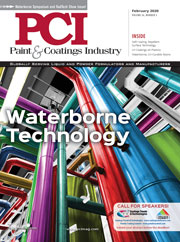Coating Binders Sales Gain Momentum Due to Rising Preference for Waterborne Technology

DUBLIN, Ireland — The coating binders market is likely to expand at a modest pace, according to the latest report by Fact.MR. The demand is expected to surpass 36,000,000 tons by the end of 2018. The manufacturers in the coating binders market are shifting their focus from solvent-based coatings to water-based coatings. Stringent regulations by the governments across various countries with an aim to minimize VOC emission are resulting in the use of water-based coatings.
In order to meet stricter VOC regulations, the demand for less expensive low- or no-VOC solvents has increased in the coatings industry. Manufacturers are increasing investments to accelerate the research and development activities to develop and offer low-VOC solvent-based coatings. Modification of equipment to work with water-based coatings is also on the rise in order to save the cost of purchasing new drying equipment.
The demand for alkyds coating binders is anticipated to grow at a significant rate, according to the study. Alkyd coating binders are likely to dominate the organic coatings industry for a long time owing to their inherent potentials and versatile characteristics. Employing a significant amount of renewable material is one of the biggest factors for substantial growth of alkyds in the coating binders market.
The demand for alkyds is also rising owing to their low cost as derived from renewable raw materials. Increasing government regulations on chemical-based coating binders is resulting in consumers and industries moving towards using eco-friendly materials.
Water-based versions of alkyd binders are also being developed on a large scale to meet the VOC standard imposed by governments across countries. The demand for alkyds is constantly increasing in wood care, light duty industrial, automotive aftermarket, and architectural coatings.
There has been a substantial growth in the infrastructure and construction industry in the APEJ region. With the growing construction industry, the demand for coating binders is also rising in the region. Increasing production of semiconductor and electronic goods, as well as the significant growth in the automotive industry in China and India, is likely to create growth opportunities for coating binders manufacturers.
Radiation-cured technology has been used on a large scale in China. The Chinese government is focusing on reducing VOC emissions, and this has impacted the use of radiation-cured technology in China. In order to comply with regulations, radiation-cured technology users have been working with coating manufacturers. This has resulted in the increasing use of UV coating technology in China.
Manufacturers in the coating binders market in China are also focusing on developing new waterborne coating solutions for furniture, construction and other industries. The development of the new coating technology in the coating binders market in the country is also accelerating. Companies are focusing on developing new coating technology for high- and low-temperature resistance, anti-graffiti coating technologies, nano-smart coating, and self-cleaning coating technology.
Demand for solvent-based coatings is declining in China and India, driven by increasing environmental concerns in these countries. An area of potential growth is seen in “green” coating technology. Manufacturers of green coating binders are investing in developing eco-friendly coating binders with the same performance as traditional solvent-based coatings.
The marine coatings market in APEJ is also expected to witness a steady growth, with development in the offshore engineering and shipbuilding industries. The constant need for maintenance and repair of ships is likely to drive demand in the coating binders market.
The overall growth in the coating binders market is likely to remain steady. The demand for the coating binders is expected to expand at a 3.4% compound annual growth rate during 2018-2027.
For additional information about the study, Coating Binders Market, visit https://www.factmr.com/report/2373/coating-binders-market.
Looking for a reprint of this article?
From high-res PDFs to custom plaques, order your copy today!






